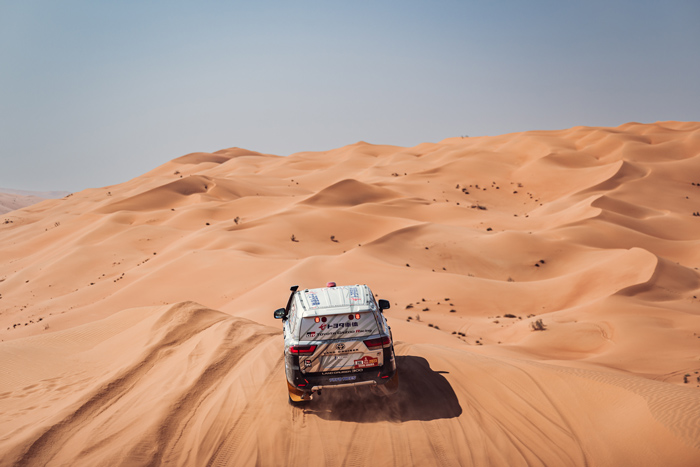HOME > About Dakar Rally and TLC
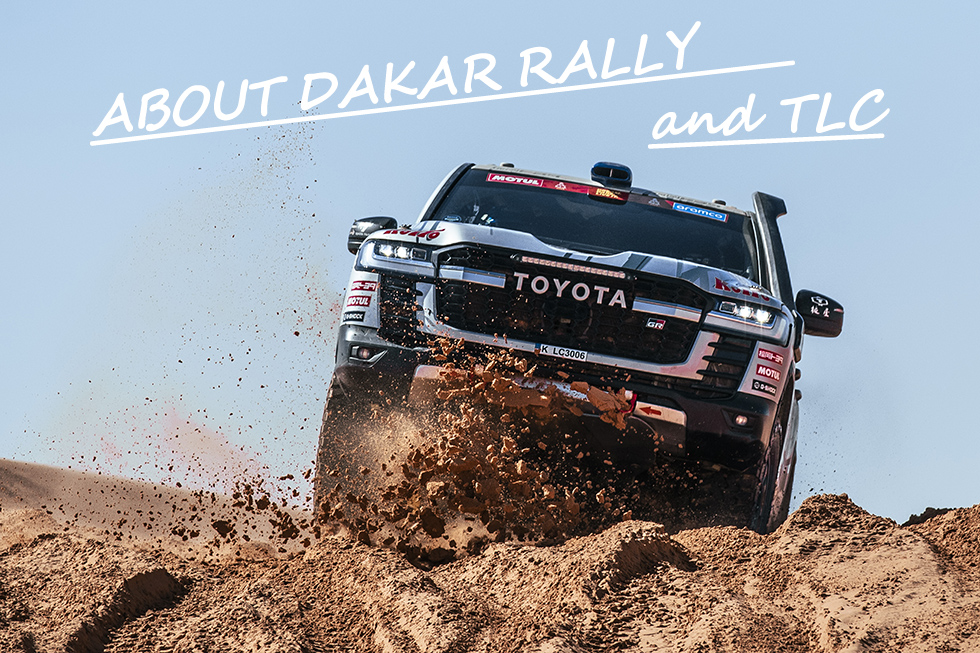
TLC takes on the Dakar Rally challenge with the Land Cruiser. The rally is a competitive cross country motorsports event that takes place in the scorching heat of the desert; hard rocky terrain and mountains; destinations with no roads. The Dakar Rally is an extreme event with unforgiving conditions and time limits, and only half of the contenders are able to reach the finish line. It has rightfully earned its reputation as the toughest event of its kind in the world.
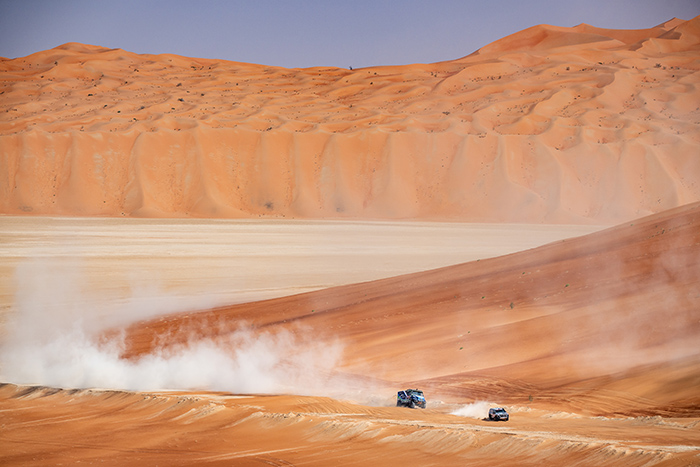
In December of 1978, a young man from France named Thierry Sabine came up with a plan and opened the doors to a world of adventure.
A race starting in Paris, crossing over the Sahara Desert and finishing in the capital of Senegal: Dakar. It became widely known as the Paris-Dakar Rally.
The rally was moved to South America between 2009 and 2019 due to political instability in the region. Then, in the search for renewed adventure, in 2020 it moved to Saudi Arabia in the Middle East.
Despite being located some distance from the original Paris-Dakar, the Dakar name has always been carried over. The name is synonymous with "the world's most extreme rally" and represents the spirit of non-stop adventure. The rally continues to attract large numbers of fans and spectators, capturing their hearts to this day.

The Dakar Rally has a total distance of approximately 8,000 kms and takes around two weeks to complete. This distance is equivalent to about one fifth of the Earth's circumference.
Most of the stages include lodgings (bivouacs) and a transit stage (liaisons). For some stages, the total daily driving distance is approximately 1,000 kms.

The route is shown through a set of instructions known as the road book. However, despite being instructions, the road book is just a simple document that shows distances and names of destinations. In the 4-wheel category, a co-driver accompanies the driver and acts as a navigator, using their expertise and experience to ensure the best route is used. The navigator and driver must have an excellent relationship with a high level of trust.
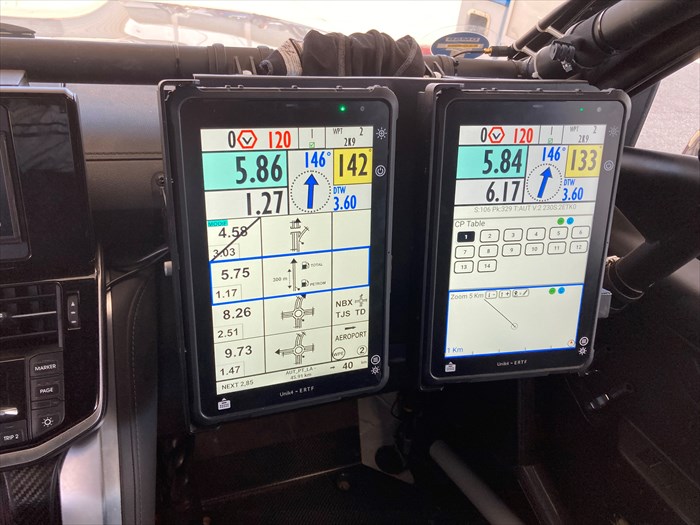

By the end of a stage a car has been through hell. The team make their way back to the bivouac where mechanics await their return. Lighting is dim in the maintenance tents where cars are worked on every evening, and the ground is difficult to work on. On top of that, temperatures can significantly drop at night, adding to the already extreme conditions. Mechanics work late into the night, and after they finish their work they rest in the tent. The following morning, they must wake up early to leave for the next bivouac where they will once again be waiting for the team's return.
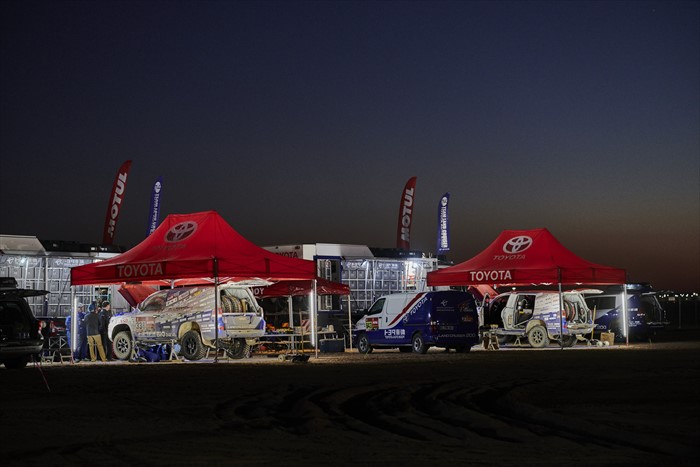
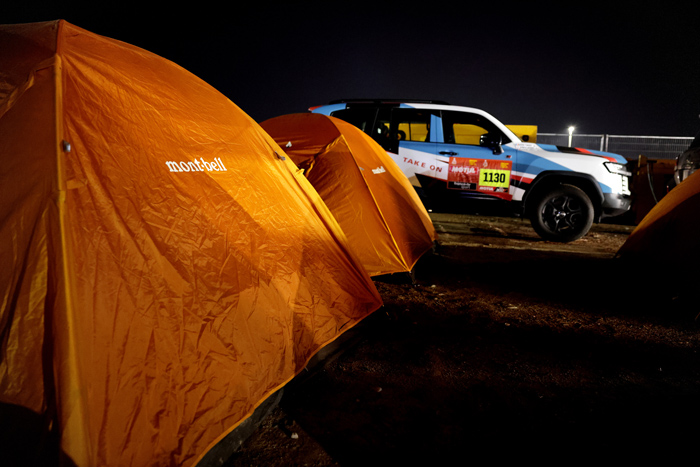
The Dakar rally covers around 8,000 km over a duration of approximately two weeks. The distance and duration sometimes vary depending on the year. The start and finish lines are planned in advance and each of these sections are called "stages".
Each stage on each day consists of a liaison section (participants move to the next bivouac during this time) and a competition section known as a Special Stage (SS).
The amount of time taken to complete the SS is measured and used to calculate the competitive rankings. Any time penalties incurred during the SS (shown as the red section in the map below) are added to the time taken to complete the section. The running total of the results are known as the cumulative total. When teams complete the final stage, totals are calculated and the team with the fastest time is declared as the winner.
During the SS, no one except the driver and navigator are permitted to service the vehicle when there is any trouble. The driver and navigator must work together to solve any issues that may arise during the SS.
The French word liaison is used in the Dakar Rally to represent the section between stages where teams move to the next stage. Specifically, it is when teams move from the campsite to the SS starting line, and from the SS finish line to the campsite for the next stage. Public roads are used for liaison sections, and for this reason people must drive while obeying all regular road rules. As a result, this section is not timed for competition purposes, however, a time limit does apply. Participants may be disqualified if they exceed the time limits that are set out in the regulations.

Figure: A typical stage (ex: Start in San Juan → Finish in Chilecito)
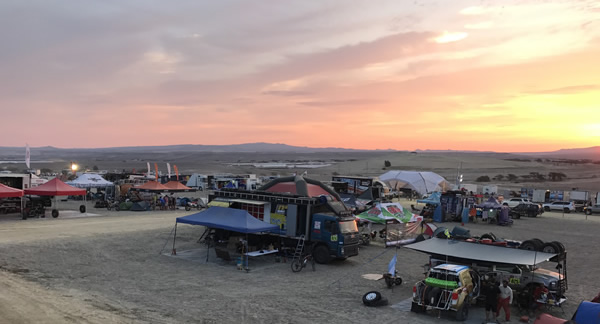
TLC has been competing in the production category with the Land Cruiser for over 25 years since their first rally in 1995. The production category requires vehicles to be as close as possible to actual production models, so permitted additional equipment is limited to areas such as safety-related items. The aim is to successfully complete the rally without breaking the car in the extreme conditions. For this reason, there is a huge emphasis on the base production vehicle’s performance.
TLC’s aim is to contribute to making ever-better cars by pushing the Land Cruiser in the most extreme environments and conditions to strengthen it even more. The team also looks for hints regarding what can be evolved in future cars and continues to aim for victories in the production category.

Various categories compete in the Dakar Rally: moto (off-road bikes), auto (cars), and trucks. A total of around 300-500 cars participate every year, but only 30-50% of those make it to the finish line.
| Auto category |
Modified car category (group T1)

|
|
Production car category (group T2)
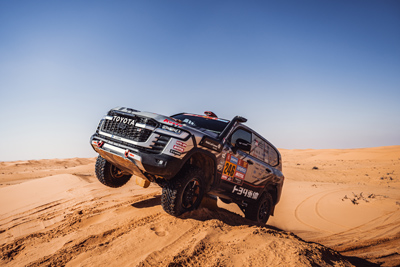 *TLC is in the production car category
*TLC is in the production car category
|
As specified in the regulations, production vehicles are those that are manufactured in quantities of more than 1,000 units per year and are equipped with safety devices such as roll cages. During the rally, replacement of major engine and drivetrain components is prohibited. |
|
Lightweight vehicle category (group T3/T4: SSV category)
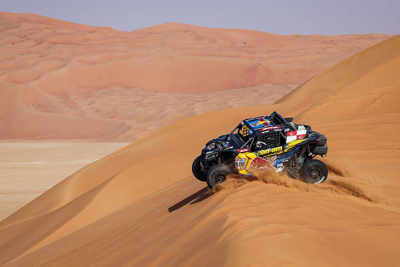
|
||
| Truck category | Truck category (group 5) | |
| Moto category | Off-road bike category | |
| Quad category | 1-person 4-wheel buggy category |
From its staff members, Toyota Auto Body chooses managers, drivers and navigators and appoints them as part of the team. Elected staff gain experience through development testing both domestically and abroad and then go on to challenge the Dakar Rally. With these initiatives, staff members themselves are also trained and developed on the actual site, and this connects to their own growth.
Currently, the manager and driver positions are held by staff members. Be sure to keep an eye on their struggles and triumphs!

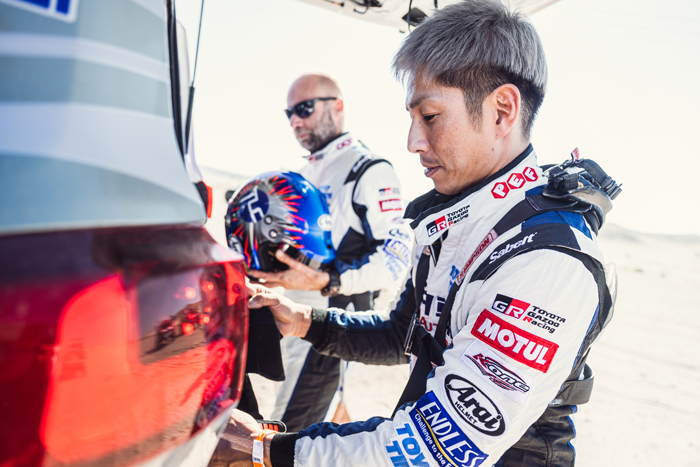
TLC continues to take on the challenge, pushing the Land Cruiser to its limits.
